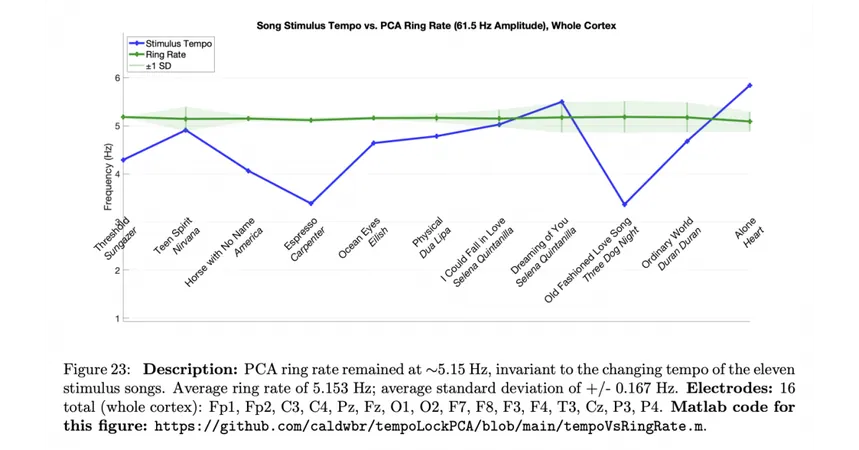
Unlocking Consciousness: The Groundbreaking Insights of Caldwell's Dynamic Ringframe Theory
2025-07-13
Author: Yu
Revolutionizing Our Understanding of the Brain's Rhythms
In a bold new study, researcher Brad Caldwell from Auburn University delves into the intricate world of consciousness through his Dynamic Ringframe Theory. The research underscores how periodic events—whether arising from our surroundings or generated internally—activate remarkable rotational dynamics within the brain.
The Core Findings: Periodicity in Action
Caldwell’s analysis reveals that even as the tempo of music fluctuates between 3 to 6 Hz, a steady cortical rhythm at 5.15 Hz persists. His principal component analysis (PCA) of EEG data shines a light on how these rhythms engage our brain, suggesting that our conscious perception is more closely tied to rhythmic patterns than previously thought.
EEG Data: A Treasure Trove of Insights
Using advanced dynamic PCA techniques, Caldwell found that while the overarching rhythm remained stable, the brain still responded dynamically to significant musical cues—like beat drops or vocal entrances—indicating that consciousness may indeed represent a stream of filtered events organized through a complex geometrical framework.
The Dynamic Ringframe Theory Explained
At the heart of Caldwell’s work is the concept of 'ringframes', which are discrete, geometrically-structured sequences of neural responses. These ringframes function as the brain’s anchors for building and updating our perception of reality, often revealing rotational dynamics during musical experiences.
Complementary Research Enhances Caldwell’s Hypothesis
Caldwell's findings align with earlier studies demonstrating similar rotational dynamics at the neural population level. A significant study involving monkeys tapping in rhythm showed that their neural spikes formed circular patterns, lending credence to the notion that our brains may utilize low-dimensional rotations as internal timekeeping mechanisms.
Expanding the Research Frontier
Caldwell’s exploration does not just stop at cortical dynamics; it opens avenues for future research, such as investigating the effects of photic stimulation on visual perception. The study hints at the possibility of uncovering further dimensions of consciousness tied to rhythmic stimuli, like those experienced during strobe lighting.
A Call for Further Exploration
As the scientific community responds, Caldwell is calling for more rigorous studies into how these periodic phenomena affect consciousness and our perceptual experiences. With the convergence of multiple findings, it becomes increasingly clear that rhythmic patterns play a pivotal role in shaping how we experience the world.
Final Thoughts: A New Lens on Consciousness
Caldwell's innovative work challenges our existing paradigms and illuminates the intricate ballet between consciousness and periodic stimuli. As we peer deeper into the brain's workings, we may soon discover fundamental truths about perception itself, propelled by the rhythms that define our existence.




 Brasil (PT)
Brasil (PT)
 Canada (EN)
Canada (EN)
 Chile (ES)
Chile (ES)
 Česko (CS)
Česko (CS)
 대한민국 (KO)
대한민국 (KO)
 España (ES)
España (ES)
 France (FR)
France (FR)
 Hong Kong (EN)
Hong Kong (EN)
 Italia (IT)
Italia (IT)
 日本 (JA)
日本 (JA)
 Magyarország (HU)
Magyarország (HU)
 Norge (NO)
Norge (NO)
 Polska (PL)
Polska (PL)
 Schweiz (DE)
Schweiz (DE)
 Singapore (EN)
Singapore (EN)
 Sverige (SV)
Sverige (SV)
 Suomi (FI)
Suomi (FI)
 Türkiye (TR)
Türkiye (TR)
 الإمارات العربية المتحدة (AR)
الإمارات العربية المتحدة (AR)